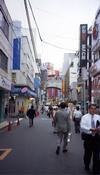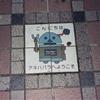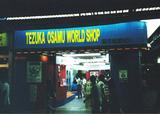 |
As opposed to the last time I was in Japan (about seven years ago), I
found two things were very different this trip in Akihabara:
- Seven years ago, Akihabara had many, many toys -- er, I mean, electronic
devices -- that were unavailable in the U.S. I found that isn't nearly
so true anymore. Apart from miniDisc players, which are just more popular
in Japan than in the U.S., the difference has shrunk tremendously. There
were a few things that I hadn't seen in U.S. stores, but not many --
it seemed like the gap between introduciton in Japan and introduction
in the U.S. was usually only a few weeks, or even simulataneous.
- Seven years ago, Akihabara was *much* more expensive than the U.S.
for anything that was available in both countries. Now, that's also
not so true. Things were about the same as the U.S. given the exchange
rate -- maybe +/- 5%. Of course, a big part of that has been the computer
price wars that finally reached Japan, courtesy of Compaq, a few years
ago. But it's now true of most consumer electronics I saw as well --
it's just not a tremendously expensive place to buy stuff anymore.
|


